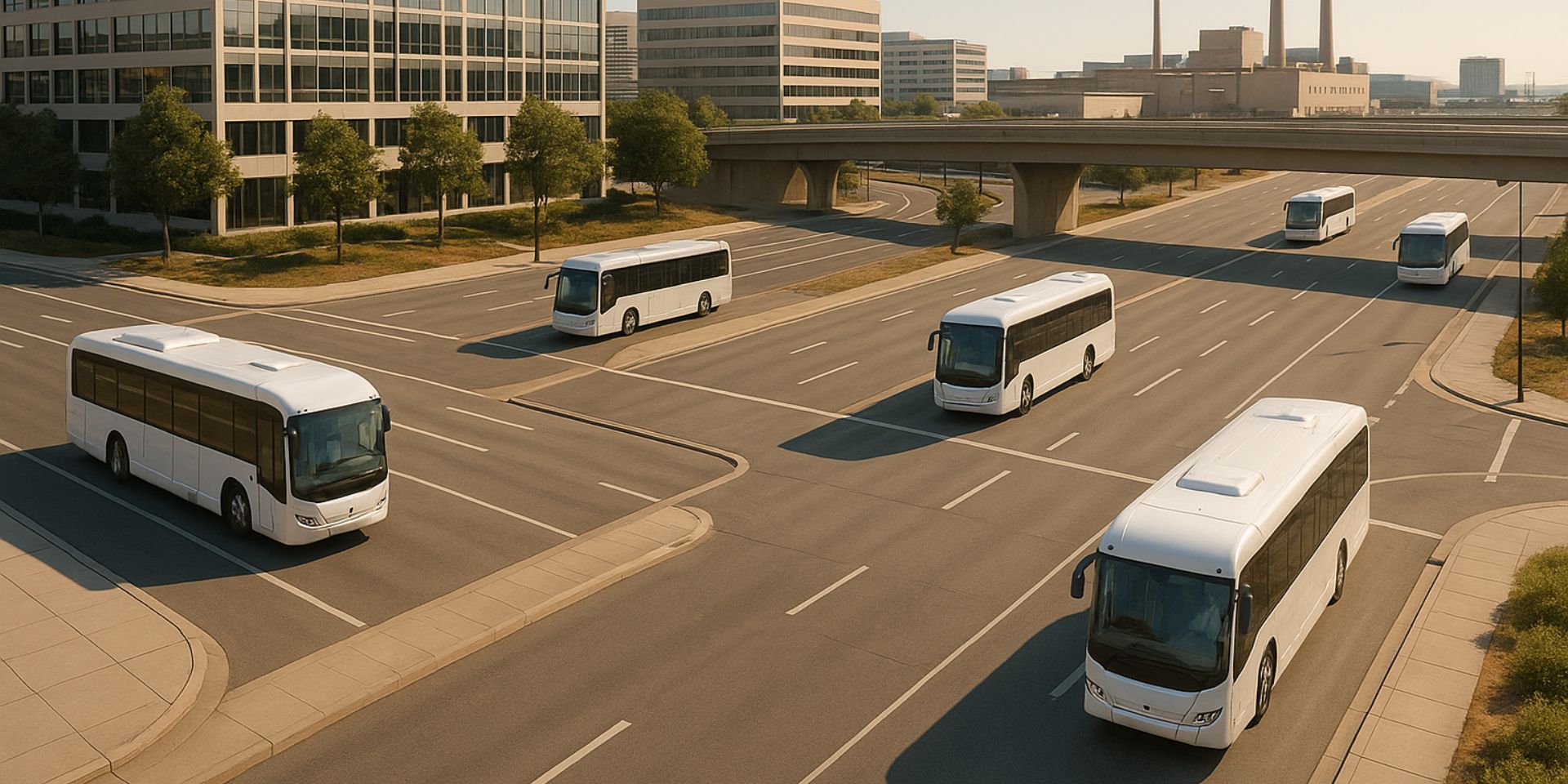How your business can positively impact environmental change
.avif)

And it’s not surprising when you consider the data. For example, carbon dioxide in the atmosphere reached record levels in 2020, reaching 417 parts per million (PPC) in May.
Furthermore, the annual production of plastic swelled from two million tons a year in 1950 to 419 million tons in 2015, and research by the World Health Organisation highlights up to seven million people die from air pollution annually.
Individuals, governments and corporations all play their roles. In this article, we focus on sustainable practices for businesses, and how they can play their part in helping the environment. But first, let’s delve into how companies harm the planet.
Businesses harming the environment
The working world damages the environment in a number of ways, including:
- Office heating and air-con systems use massive amounts of electricity and pump greenhouse gases into the atmosphere. Moreover, a lot of buildings aren’t energy-efficient. In 2019, 17% of net greenhouse gas emissions in the UK came from business.
- When people commute to and from work, traffic jams pollute carbon into the atmosphere.
- Even with better recycling practices in place, office workers still generate tons of paper waste that goes to landfills or incinerators.
- Alongside paper, additional waste spans equipment such as computers and other electronics. Ending up in landfills, they don’t break down and can leach dangerous chemicals.
- Many offices aren’t built from renewable material and bulky machinery used in construction still leans heavily on fossil fuels.
- Lighting, computers, printers, photocopiers: these all use huge amounts of electricity and are sometimes left on 24/7, even when no one’s actually working.
Eco-friendly solutions
There are a host of things businesses can do to positively impact environmental change. Let’s explore a handful one by one.
Sustainable transport

According to Statista, in 2019, 86% of American commuters used their own vehicle to travel between home and work, with 68% of the UK population using their car. With the environment, an ever-pressing concern now’s the time to shake things up with commuting changes.
Zeelo is a prime example of what’s achievable, offering a sustainable commuting system via a fully managed bus service. You can reach your environmental goals and free up car park space while improving staff recruitment.
The company’s affordable and flexible employee shuttle programmes provide route design, vehicle management, booking platforms and live tracking. The added bonus? Their smart buses are making the move to electric, with all partners given the option to upgrade to a fully electric service.
What’s the impact when Zeelo provides employee transport to 100 people? There’s a saving of 403 kilograms of carbon dioxide every day, equating to 91 tons over a year – the equivalent of planting 600 trees. One Zeelo removes an average of 30 cars, giving businesses space to grow while reducing congestion in the area.
Kicking back and commuting via bus certainly has appeal. But for employees who aren’t keen, other sustainable commuting options include carpooling and cycling.

Make the move to green energy
Switching to clean energy generated from renewable sources – sun, wind, water and biofuels – is another way for businesses to reduce their environmental footprint. Green energy comes from sources that don’t run out or produce harmful emissions that cause climate change.
There are cost savings to be had, too – head to the Big Clean Switch for more info.
Who are your suppliers?
Your organisation may deal with many different suppliers along the chain. Are they environmentally responsible? To check, research their eco-credentials and dig into the company’s ethics and environmental practices. Take a look at Ethical Consumer Magazine to view ratings based on policies and actions towards the environment, people, politics and animals.
Gold Standard offsetting
Net-zero emissions is the ultimate goal, with prevention, reduction and investment the best ways to achieve that. Offsetting is an option too but think of that more as a last resort. Why? The best solution is to stop harmful emissions from getting into the atmosphere in the first place.
But if your business does go down the offsetting route, be sure to use Gold Standard certified projects. Gold Standard also advocates going Climate+ – rather than aiming for carbon-neutral, offset more than your footprint.
Measure and reduce your carbon footprint
As well as investing in a sustainable transport service like Zeelo, diverting to green energy, or Gold Standard offsetting, other ways to reduce the carbon footprint of your business include:
- Changes to the office environment. For example, use energy-efficient lighting such as LEDs, apply motion sensors for lighting, and instal temperature controls.
- Invest in a Revolving Green Fund. This is a self-financing method to pay for energy-saving initiatives.
- Reduce waste and recycle. Consider buying recycled paper or go paperless where you can, and donate old electronics.
- Lower aviation emissions. Don’t travel for business unless you really need to; consider replacing emission-laden journeys with conference calls.
As well as reducing your carbon footprint, it’s also a good idea to measure it. That way, your business can set targets and keep track of progress. Emissions are grouped into Scopes:
- Scope 1: All direct emissions from the operations of a company
- Scope 2: Indirect emissions from electricity bought and used by them
- Scope 3: All other indirect emissions generated by the organisation that are out of their control, such as waste and water
Use an online tool such as Climate Care or Greenhouse Gas Protocol to calculate your business emissions.
Or, you may choose to set a more formal science-based target – a public commitment to reduce emissions.
Environmental Management-certified (ISO 14001)
ISO 14001 is a set of standards created by the International Organization for Standardization relating to environmental management. The model helps businesses minimise negative environmental impact, comply with regulations, and strive to continually improve. By adhering to the criteria, companies improve resource efficiency, reduce waste and lower costs.
There are in excess of 300,000 ISO 14001 certifications in 171 countries around the globe. Fancy joining the club?

Planet-friendly pensions
It’s easy to forget about money your business invests elsewhere. Take pensions: do you know where you funnel your employees’ money? Many pensions and other investments support harmful industries such as deforestation and fossil fuels. Instead, consider switching to an eco-aware portfolio.
According to research, sustainable pension funds are 21 times more effective at reducing carbon footprint than not flying, turning vegetarian and switching your energy provider.
UK pensions amount to £2.6 trillion, with the average pension having a carbon footprint of 26 tonnes. If your business is green, the pensions you offer should be, too.
Community efforts
Protecting the planet is possible in a variety of ways. Alongside sustainable business practices, organisations should also consider taking care of local communities and environments. Setting up volunteering days or donating to charities are easy and quick ways to make a start.
But if you want to go further than that, read on for inspiration.
TOMS
Philanthropy is important to this ethical B Corp certified shoewear brand that commits a third of its profits to grassroots initiatives. Each month, all members of staff get the opportunity to put forward an organisation they feel passionately about. The team then decides which company will receive $10,000 to further their work at the local level.
Avocado Mattress
As a member of 1% for the Planet, this B Corp certified maker of eco-friendly mattresses donates 1% of revenue to vetted nonprofits like The Leave No Trace Center for Outdoor Ethics, Big Green and Plastic Oceans International. Highlighting their efforts, the company was presented with a Pinnacle Award for businesses going above and beyond in terms of environmental responsibility.
Patagonia
How much has this outdoor apparel company donated since 1985? A whopping $140 million in cash and in-kind pledges to environmental groups. Also a member of 1% for the Planet and B Corp certified, they’ve paved the way for more corporate responsibility.
Case studies
We recently covered the most sustainable companies in the world in 2021 according to Canadian research firm Corporate Knights. To qualify, the business must be publicly listed and generate gross revenue of more than $1 billion. And the ranking? Based on core 24 sustainability metrics such as gender and racial diversity, clean revenue, and carbon footprint.
Schneider Electric SE took the number one spot, with Ørsted A/S and Banco do Brasil SA coming in second and third. We profiled these corporations in that article, so here, let’s take a look at a handful more organisations in the top 10, outlining what they’re doing to positively impact environmental change. Your enterprise may want to take a leaf out of their book.
McCormick & Company Inc
This US multinational food company manufactures, markets, and distributes spices and condiments to retail stores and foodservice businesses. In terms of sustainability, McCormick works directly with farmers, removing unnecessary intermediaries and increasing the efficiency of the chain. As a result, farmers access better prices and services and increase their profits. Additionally, a premium is generally paid for Rainforest Alliance-Certified™ products.
McCormick is committed to sustainable sourcing via their Grown for Good framework – the first certification programme in the herb and spice market, going beyond industry standards.
Moreover, they give back to farming communities by investing in projects. For example, in Madagascar, they’ve donated funds to restore primary schools and increase education opportunities. And in Indonesia, they’ve given money to vanilla and black pepper nurseries to provide free or subsidised seedlings to locals.
Kering
For French upscale goods company Kering, “Luxury and sustainability are one and the same.” Their 2017-2025 roadmap has three pillars: care, collaborate, create.
- Care: Reducing environmental footprint by using innovative tools and original methodologies. They’re aiming for a 50% reduction in carbon emissions by 2025 within Scopes 1 to 3 of the Greenhouse Gas Protocol. They’re also gunning for 100% of the supply chain to be transparent by 2025.
- Collaborate: The aim here is to boost stakeholder engagement in promoting sustainable luxury, promote parity and diversity, and be an employer of choice.
- Create: Through innovation, knowledge sharing, and groundbreaking solutions, Kering strives to bring sustainable practices into the mainstream. For instance, they created the Materials Innovation Lab (MIL) in 2013, seeking to identify sustainable and responsible alternatives in terms of materials and fabrics.
In 2020, the Group unveiled a biodiversity strategy of four stages: avoid, reduce, restore and regenerate, and transform. They’ve also implemented the Environmental Profit & Loss (EP&L) account, a tool for measuring and quantifying the environmental impact of the company’s activities.
Metso Outotec
A frontrunner in sustainable technologies, Metso Outotec operates efficiently and responsibly. With the environment a key strategic priority, they’re committed to limiting global warming to 1.5°C. Moreover, all their investments and R&D projects have sustainability goals. And they’ve set themselves science-based targets, approved externally. The four main focus areas are:
- Energy efficiency and emissions
- Water efficiency
- A leading offering in circularity
- Safe operations
The company is committed to using electricity from renewable sources and cutting CO2 emissions at their factories by 60%. They’re also consolidating their warehouse footprint, simplifying and streamlining processes while cutting logistics emissions by 30%.
Metso Outotec’s ecological handprint is greater than their footprint, making them ‘Planet Positive’. The company currently has more than 100 products that fulfil that criteria.
Sustainable practices for companies
Over one million species face extinction, our oceans are dying, and climate change could be irreversible by 2030. Shocking, right? At a business level, there are a number of sustainable practices that can be put in place to positively impact environmental change. These range from employee shuttle programmes to throwing your organisation more heavily into community efforts.
Not only will your company reap the rewards in terms of reducing its impact on the planet, but you also improve the sustainability of your enterprise, save costs and attract new customers.
We help companies and schools achieve their transportation program goals
Corporate shuttles


Warehouse/Distribution


Schools & Universities


Become a partner


Want to know how we can help you?













